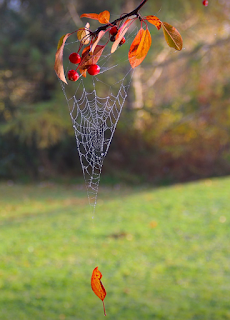NATURE
MONCTON INFORMATION LINE, October 23, 2019 (Wednesday)
To respond by e-mail, please address
your message to the information line editor, nelsonpoirier435@gmail.com .
Please advise the editor at nelsonpoirier435@gmail.com if any
errors are noted in wording or photo labelling. Note that corrections,
deletions, or delayed additions may not always appear on the Info Line and
email transcript but will always appear on the BlogSpot. For this reason, it is
recommended that those wishing to look at historical records use the BlogSpot
rather than the email transcript. The BlogSpot can always be accessed from
the website.
Edited by: Nelson Poirier nelsonpoirier435@gmail.com
Info Line # 506-384-6397 (384-NEWS)
** It is
always a very sad moment to have to say goodbye to a Nature Moncton member.
Judy Marsh passed away on Tuesday. Judy’s warmth and pleasant presence around
Nature Moncton events will be fondly remembered. Judy and her husband Sterling
were always together and Sterling will be very much in our thoughts. Judy’s
obituary is attached.
** It was a very good day for Doreen
Rossiter at her Alma feeder yard on Monday. There was no return of the female Blue
Grosbeak yet, but there were other surprise avian visitors. Doreen had a brief
visit from a BROWN THRASHER [Moqueur roux]. It didn’t use the feeders but
scratched on some soft ground and then flew across the street not to be seen
again. 6 to 8 warblers spent time in some yard shrubbery. Doreen felt that they
were all YELLOW-RUMPED WARBLERS [Paruline à croupion jaune]. In late afternoon
a BLUE-GRAY GNATCATCHER [Gobemoucheron gris-bleu] spent time hawking insects in
a maple tree near her home. Doreen noted that there seemed to be a real
movement of birds on Monday. A RED-WINGED BLACKBIRD [Carouge à épaulettes], MOURNING
DOVES [Tourterelle triste], SONG SPARROWS [Bruant chanteur] and several
WOODPECKERS dropped by her feeder yard area that had not been seen in some
time.
** A condition called “angel wing” is a
condition that Canada geese can get where the wrist joint of the wing is
inverted and the underside of the wing is visible. This is a defect that an affected
bird is born with and they are unable to fly. Pam Novak at the Atlantic
Wildlife Institute reports that they get these birds sent to them however I
have never seen one in the wild, only at the AWI facility. Georges Brun
photographed a CANADA GOOSE [Bernache du Canada] behind the Pennington’s store
location, on the bank of the Petitcodiac River, on October 21 with a wing
problem. It swam across to the Riverview Marsh. There are coyotes and foxes
there so I expect nature will take its course. Pam Novak looked at the photo
and felt that it was not the angel wing condition and probably this bird was
hit or encountered a utility wire.
** Spider webs make very pleasant
photographic material especially when dew coated. Krista Doyle captured a photo
of just that at her Lewis Mountain yard complete with fall colored leaves and
autumn fruit hanging.
** We have several hawkweed species in
New Brunswick but the introduced WALL HAWKWEED is one with a very distinctive
leaf shape that is readily identified with its ‘bow tie’ base. This hawkweed
species has a very limited distribution in New Brunswick, but is present at the
Caledonia Gorge Protected National Area where todays attached photo was taken.
Many of the hawkweeds are still showing their yellow, dandelion-like flowers
which must be very welcome to late flying nectar connoisseurs.
** COMMON SPEEDWELL is a common wild
plant in New Brunswick and is one of 8 to 10 speedwell species that can be
found in New Brunswick. A photo is attached from the Caledonia Gorge visit that
shows the seed stalk. All speedwells produce this heart-shaped style of seed.
There is one mustard species that also produces a heart-shaped seed but it is
the only one mustard to do so. The take home message is seeing these
heart-shaped seeds and opposite arranged leaves is almost always a
speedwell.
** As a heads up, there will be a
presentation at Nature Sussex next Monday night that will undoubtedly be very
interesting. Details are attached below.
Nature Sussex will host
Bob Osborne of Corn Hill Nurseries as our guest
speaker at the November meeting. Bob’s topic will be “The Oddities of
Native Trees”
The meeting is open to everyone so come and bring a friend.
Location St. Mark's Parish Hall, 4 Needle Street, Sussex Corner
Date: Monday, 28 October 2019
Time: 7 pm.
speaker at the November meeting. Bob’s topic will be “The Oddities of
Native Trees”
The meeting is open to everyone so come and bring a friend.
Location St. Mark's Parish Hall, 4 Needle Street, Sussex Corner
Date: Monday, 28 October 2019
Time: 7 pm.
Nelson Poirier,
Nature Moncton
CANADA GOOSE (INJURED) OCT 21 2019 GEORGES BRUN
COMMON SPEEDWELL IN SEED. OCT. 19, 2019. BRIAN STONE
SPIDER WEB. OCT 22, 2019. KRISTA DOYLE
WALL HAWKWEED. OCT. 19, 2019. BRIAN STONE



